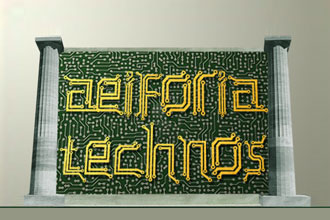The Reality of Virtual Reality
 Microsoft recently unveiled a series of commercials surrounding the long anticipated and much rumored HoloLens VR 3-D headset at both IES 2015 and during Super Bowl commercials in addition to press tours and the other typical Microsoft product showcases. This is on the heels of others such as Facebook’s recent purchase of the Oculus Rift (for a mere $2 Billion), Sony’s Project Morpheus, and Samsung’s Gear VR. Currently only the Samsung product is available with mixed reviews. These products represent a major bet by some big hitters as to how we will interact with our world and the information surrounding it. Microsoft pitches this as the next wave of computing and they certainly seem to be pushing boundaries. Windows 10 (the next flavor of their operating system) is more cloud/subscription based than software living on a CPU and they recently released their own brand of all in one wall mount 55-80” multi-touch monitors with built in CPUs and wireless connectivity that will directly interface with the HoloLens. What makes these devices different than previous attempts are the kinetic interaction capabilities play into the use of the device. The HoloLens take operating cues from Microsoft’s successful Kinect device by providing gesture based control as well as eye movement tracking over the operating system and apps planned for Window’s 10. These devices don’t just give you high resolution videos to place you in a virtual world but overlay onto the real world as well and let you interact and annotate in a way that has never been done before.
Microsoft recently unveiled a series of commercials surrounding the long anticipated and much rumored HoloLens VR 3-D headset at both IES 2015 and during Super Bowl commercials in addition to press tours and the other typical Microsoft product showcases. This is on the heels of others such as Facebook’s recent purchase of the Oculus Rift (for a mere $2 Billion), Sony’s Project Morpheus, and Samsung’s Gear VR. Currently only the Samsung product is available with mixed reviews. These products represent a major bet by some big hitters as to how we will interact with our world and the information surrounding it. Microsoft pitches this as the next wave of computing and they certainly seem to be pushing boundaries. Windows 10 (the next flavor of their operating system) is more cloud/subscription based than software living on a CPU and they recently released their own brand of all in one wall mount 55-80” multi-touch monitors with built in CPUs and wireless connectivity that will directly interface with the HoloLens. What makes these devices different than previous attempts are the kinetic interaction capabilities play into the use of the device. The HoloLens take operating cues from Microsoft’s successful Kinect device by providing gesture based control as well as eye movement tracking over the operating system and apps planned for Window’s 10. These devices don’t just give you high resolution videos to place you in a virtual world but overlay onto the real world as well and let you interact and annotate in a way that has never been done before.
These devices are promising to revolutionize six distinct areas. For gaming, the most obvious one, it promises an immersive three dimensional experience that takes up the player’s entire field of view and will put them in the driver seat in a whole new way. The military applications are also pretty obvious and are already in use in many ways including remote operated vehicles and tactical battlefield assessment. This tags along to the entertainment sector in which patrons don 3D immersive wearables that put them in the best seat in the house no matter where they are in the theater. This was recently seen at the latest Sundance Film Festival where eleven films were screened using the Samsung Gear VR equipment and Samsung has already provided a sizable library available for immediate use with their product.
The bigger areas of disruption as I see it are in the education, medical, and corporate markets. Although the medical field has been using VR for some time now, the systems have been very expensive and rather clunky at best requiring massive amounts of computing power and specialized rooms and equipment. These new products will advance tele-medicine capabilities, surgical techniques, and provide opportunity to better explain diagnoses to patients in a more informative graphical manner. In the educational markets, the opportunities can be seemingly endless. Students will be able to take virtual tours of planets, inside cells, visit historical events, or even modern day event hotspots without leaving the classroom at an affordable price. Lastly is the corporate environment providing virtual collaboration opportunities in a 3D environment allowing more than just seeing your counterparts in 3D but actually sharing 3D models and giving virtual direction to the far-end.
So what does this have to do with sustainability? For one, it provides opportunity to reduce the amount of required technology within an environment or replace systems with more efficient gear that uses less power and generates less heat. It also has the potential to dramatically reduce travel even more than has been accomplished through video conferencing systems. The biggest questions in my mind are how the devices will match up to existing systems and will the devices be upgradable without having to toss the entire device. Planned obsolescence would be a major downside to this potentially revolutionary disruptive tech.
What will be most telling as to the success of the technology is if markets during their upgrade cycle will take this on and implement it or continue with a strategy of business as usual. Some of the options are being decided for them (Windows 10) while others make some financial and operational sense. The hurdle may be the pipeline and how much information will be required and will the infrastructure provide enough bandwidth to not make this seem clunky and unusable. What are your thoughts on these new devices? Do you see them as revolutionary or just a gimmick?
Raymond Kent is the Managing Principal of Sustainable Technologies Group, LLC specializing in technology systems for the performing and cultural arts, healthcare, Government, higher education, and corporate markets. He is a co-author of the STEP rating system and serves as the chair of the Technology Task Force for the STEP Foundation. Raymond received the 2012 InfoComm Sustainable Technology Award and is involved with the Center for Sustainable Practice in the Arts.




